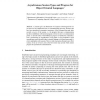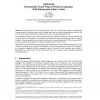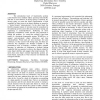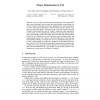40 search results - page 2 / 8 » Types and trace effects for object orientation |
FMOODS
2007
13 years 6 months ago
2007
Abstract. A session type is an abstraction of a sequence of heterogeneous values sent over one channel between two communicating processes. Session types have been introduced to gu...
ECOOP
1991
Springer
13 years 8 months ago
1991
Springer
: Polymorphic inline caches (PICs) provide a new way to reduce the overhead of polymorphic message sends by extending inline caches to include more than one cached lookup result pe...
HT
1998
ACM
13 years 9 months ago
1998
ACM
The presentation layer of hypermedia systems could benefit from standard object querying functionality and this is most effective if strong typing is enforced. By strong typing we...
SCAM
2002
IEEE
13 years 9 months ago
2002
IEEE
Dynamic program slicing is an effective technique for narrowing the errors to the relevant parts of a program when debugging. Given a slicing criterion, the dynamic slice contains...
ECOOP
2012
Springer
11 years 7 months ago
2012
Springer
X10 is an object oriented programming language with a sophisticated type system (constraints, class invariants, non-erased generics, closures) and concurrency constructs (asynchron...




